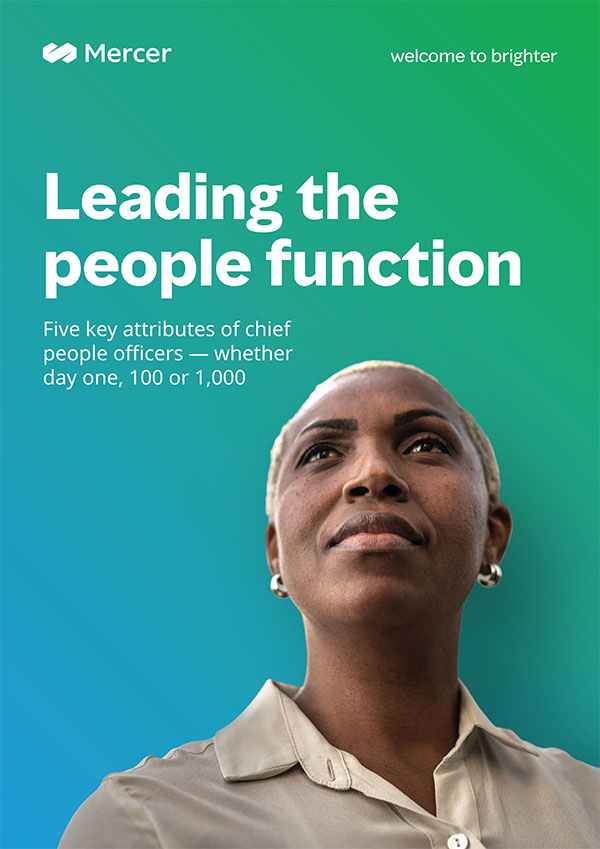We probably all agree that HR’s potential to contribute to an organization’s success is significant — perhaps even greater (in all humbleness) than other functions’. We might also agree that this potential has not been fully realized in many companies.
To illustrate this potential for positive contribution in action, imagine this scenario: A new CPO (Chief People Officer) has been appointed. This CPO and the CEO are aligned on HR’s mission-critical role in the organization. And yes, since we’re discussing an ideal state here, let’s also assume some groundwork on HR automation has been accomplished by implementing a cloud solution, which provides better employee experiences and relieves the HR team of some of its administrative burdens.
But let’s not get too optimistic about this setup: Let’s also assume that HR team members are still stuck in routines from the past and that their daily work keeps them fully occupied (since all work flows to people). They don’t always feel valued for their contributions; some may even be thinking about resigning.
How could this new CPO help steer the ship — without rocking the boat too much — and stimulate real change for the HR team by positively impacting their engagement and performance?
The CPO would probably start by listening to people — and paying attention to how HR work is perceived by both HR customers and HR team members. After reflecting on these findings, the CPO would begin enacting their ambition to change the way HR works in the future. Their first step: inviting team members to co-create a targeted vision for the future HR practice that will act as a North Star for the entire team.
This kind of genuine invitation is the spark that can activate people to start engaging for better collaboration and productivity in the future — primarily when it’s underpinned by new ways of working. Stand-ups, Kanban boards, MVPs (minimal viable products)? Absolutely. The HR function should apply agile methodologies and tools to generate better outputs in less time. And they should have some fun by doing things differently too, let’s not forget.
Sounds too good to be true? Of course, this isn’t always a smooth journey for HR teams. To manage expectations, the CPO must explain the nature of this exercise — that is, that it involves trial and error. In the spirit of the new world of work, the HR team must explore new paths, make mistakes, iterate — and then try again. It will undoubtedly be frustrating at times. But it will also be rewarding when the entire practice gets closer to its target state, receiving positive feedback from customers and colleagues.



